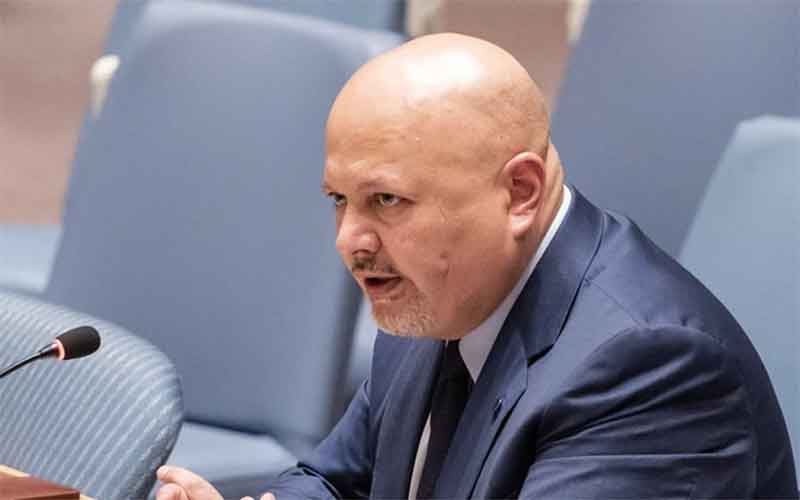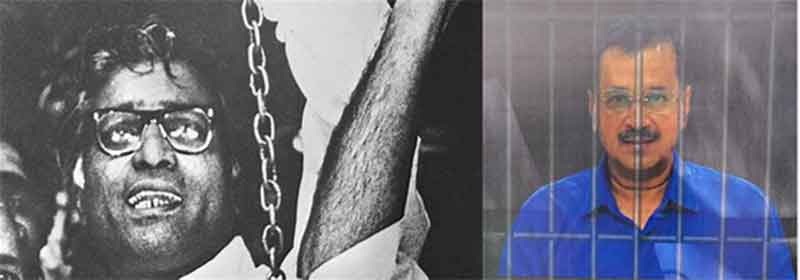
The mind is a winding river, its churning waters both cluttering and cleansing many shores and various ports of call. The broad outlines of the 1958 strike by the steel workers of Jamshedpur are still there in my memory; I was all of ten years of age at the time. The strike was a spontaneous uprising under the banner of the All India Trade Union Congress (AITUC), the labour arm of the Communist Party of India (CPI), still an undivided entity then. The incumbent union – affiliated to the INTUC, which owed allegiance to the Indian National Congress – gave out that the strike was a Communist conspiracy to take control of things. The strike was mercilessly put down by a ruthless State machinery which was in the hands of the Congress in both Patna and New Delhi. Many lives were lost as the police fired on a peaceful gathering of striking workers; many times more lost their jobs.
The working class movement in Jamshedpur never regained its former glory. The workers lost their independent voice and, henceforth, the captive INTUC union that the Tisco management had left no stone unturned to save, gave an even more servile account of itself than before. One remembers that the management was quick to claim that the strike resulted from differences within the workers, and that it had nothing to do with it. However, facts on the ground told a different story; a story that has not been sufficiently pursued but has nonetheless become an inseparable part of the oral history of Jamshedpur. If scholars and researchers in the area of labour and industrial relations had done their bit, perhaps the nation would have been better informed about the strike in the unforgettable summer of 1958 and its brutal suppression.
The striking workers could not have asked for abler leadership than that provided by Kedar Lal Das and his associates, notably Barin De, Ali Amjad and Dr. Udayakar Mishra. My journalist-father, like thousands of others in Jamshedpur, held the CPI leader in the highest esteem, simply because he deserved no less. An ascetic in the old Communist mould, Kedar Babu, as he was generally addressed by people, dressed simply and ate little. He decided to remain unmarried early in life and lived all his years with an elder brother and his family. He spoke little but when he spoke, people listened to him intently because they knew they were in the presence not of rhetoric, common to most leaders regardless of their affiliation, but of wisdom realized in the heat of making the people’s cause his own. I remember father saying, “Kedar Babu is fire within, ice without.”
When Kedar Das died many years after the 1958 eruption, at least a lakh of people, not all of whom agreed with him on everything, accompanied him on his last march with full-throated cries of “Comrade Kedar Das, zindabad! Comrade Kedar Das amar rahey!” The last time the people of Jamshedpur had seen such a scene and heard such a chorus was when Professor Abdul Bari had died. With Kedar Das’ death, the Left was left with no one at the top who commanded the kind of prestige and popularity that he did. In the resultant vacuum, Rightist elements entered the Jamshedpur scene with an agenda that held no good for workers and their families.
Scores of journalists from all corners of the country descended on Jamshedpur during the strike. They were taken care of handsomely by the public relations department of Tisco, then headed by one Dilip Mukherji who in course of time joined The Statesman in Calcutta, only to leave it for The Times of India. The well-oiled publicity wing of the company worked overtime to feed the visiting scribes with its version of events. Half-truths competed with utter falsehoods to paint the strikers in demonic colours. My brothers and I, not to mention our mother, could see father’s private anguish at the way facts were being distorted and distributed for public consumption. Perhaps what saved father from himself was that the Press Trust of India (PTI), which he served as a ‘stringer’, had sent a senior ‘staffer’ from their Calcutta office by the name of Sudhir Chakraborty to cover the strike. Father heaved a sigh of relief for he had a well-earned reputation to protect, but his unhappiness remained.
Any worthwhile chronicle of the strike must necessarily mention some incidents that have so long been restricted to the realm of oral history. Not everything about every event gets to be recorded – that is not humanly possible; that is not the way history grows. Some seemingly small but significant incidents often fail to make it to the books, but manage to get transported from one generation to the next by that most potent and lasting vehicle of social communication – word of mouth. I have a feeling, perhaps encouraged by a sense of exaggerated self-importance, that if I fail to mention at least two incidents relating to the strike, they are certain to get lost for want of a chronicler. And the plebeian’s loss will be the patrician’s gain.
The first deals with Barin De, Kedar Das’ foremost lieutenant in the strike, as indeed in many battles preceding and succeeding it. Even as many a captive journalist was being wined and dined at Tisco Hotel in the elite Northern Town area, Barin-kaku (Barin Uncle), who used to write for Shadhinata (Liberation) – the Bangla organ of the CPI published from Calcutta, now defunct – was organizing the strikers on an almost empty stomach. A big, heavily-built man in wide-legged pyjamas, full-sleeved shirt with the sleeves rolled up to the elbow, and leather chappals that had seen many an extra summer, Barin De was sacrifice personified. Like his mentor, Kedar Das, Barin De, too, never married and counted as his family those for whom he struggled. He was a frequent visitor to our house, and lived with another Chatterjee family in the same locality as ours. The head of that household was a fellow-traveller who admired Barin-kaku’s almost suicidal exertions on behalf of the workers. I don’t know how far it is true but local gossip had it that in return for free food and lodging, Barin-kaku used to do the family’s washing along with his own and other household chores. It was also said that the man once claimed that a Communist never takes anything for free from anyone. It was a different time.
On a merciless summer day at the height of the strike, it so happened that Barin-kaku and father came face-to-face in the vicinity of Tisco Hotel. Plainclothed police informers were trailing the strike leaders who, in their turn, were trying their desperate best to keep a step or two ahead of their pursuers. When Barin-kaku told father that he had had nothing to eat for more than twenty-four hours and asked whether some food could be got somehow, father thought up a plan. It was decided that Barin-kaku would wait at a certain relatively safe place nearby while father went in search of food. He entered Tisco Hotel where everybody knew him since he was a local patrakaar (journalist), took one of the bawarchees (cooks) aside, and asked for two plates of chicken sandwiches to be readied and packed. Since journalists had a free run of the place, the order did not cause any suspicion. Leaving the hotel hurriedly with the food packet in his briefcase, father headed for the spot where he was supposed to meet Barin-kaku. I still remember father’s words about what happened next : “The big famished man practically snatched the packet from my hand and began to wolf down the sandwiches without a pause. I had known hunger in my boyhood and youth for the family never seemed to have enough, but that day seeing Barin eat without looking to his left or right, I learnt a fresh lesson in what hunger means.” Both father and Barin-kaku have long been dead, but the fact of their comradeship will never die in my mind.
The strike attracted leaders from all directions. Name any Left leader of national eminence of the day, and he was there in Jamshedpur to pitch in his effort. Indrajit Gupta, who was to be seen in the role of Union Home Minister decades later, gave an exemplary account of himself during the strike. Soon after he had reached Jamshedpur clandestinely, Bihar Police and Tisco informers got wind of Gupta’s arrival. They lost no time in getting into the act of trying to nab the ‘mischief-maker’, one of the politer terms that the authorities freely used to describe the strike leaders. Soon there came a time when Gupta was running literally from pillar to pillar, post to post, in the company of one or two local escorts. According to Shanti Mukherjee, the owner of a small eating place in the Kadma market of the township named ‘Ramesh Cabin’, one night Gupta was brought to the eatery with the urgent request to find a ‘refuge’ for the leader for at least a couple of days since the police were hot on his heels.
Shanti Mukherjee was a short, soft-spoken, dhoti-clad bhadralok who took his Communism seriously. He took Gupta to the dark, dirty recesses of a place that people of the locality knew as ‘Mamoor Koylar Taal’ (Maternal Uncle’s Coal Depot) and asked him to change from his trousers and shirt-sleeves to singlet and underpants, which were then liberally smeared with handfuls of coal dust. His face and limbs were also similarly blackened. He was then told to stay put for two or three days. Food and water was reached to him from time to time by trusted party workers. The air inside the coal depot was damp, foul and suffocating. How the man must have suffered all alone in the dark! When Mukherjee felt sure that the pressure to catch Gupta had somewhat lessened, it was arranged for the latter to take a night train out of Tatanagar station. Even in that state Gupta had been advising the strikers about what to do and what not to.
Kedar Das breathed his last in 1981. Despite ill-health, he was leading an agitation by workers in the employ of rapacious Tisco contractors when his end came. Most of these workers were of Adivasi stock who had been made to slog like slaves for decades together; facilities were non-existent and wages were beggarly. The agitation was meant to bring pressure on the Tisco management to convert their status from ‘bonded labourers’ to ‘permanent employees’. It is widely believed in Jamshedpur that Kedar Das fell to a blow on his chest by the Tisco security staff whilst leading a march by the aggrieved labourers.
Paritosh Bhattacharya, an ardent follower of Kedar Das, wrote in Motif, the local avant garde weekly paper : “To be with the people during the storms is an immortal bequest ever renewed by selfless people like Kedar Das for ushering in a happier and nobler life for everyone, everywhere on earth.” In that article, Bhattacharya quoted Nikolai Vuptsarov, a young Bulgarian poet who was shot by a Nazi firing squad during World War II. The night before he was shot, Vuptsarov wrote a short poem which Bhattacharya resurrected in his homage to his much-loved and much-missed Kedar-da : After the firing squad, the worms,/ Thus does the simple logic go,/ But in the storm I will be with you,/ My people, because I loved you so.
The 1958 steel workers’ strike failed to achieve its high objectives, so did the 1981 agitation by contractors’ labour. Yet, more than one-eighth of Jamshedpur’s population turned up at the cremation of Kedar Lal Das. That one-eighth meant a little more than a lakh of people. If the Indian nation has not heard of the unique individual who was ‘Kedar Babu’ to some, ‘Kedar-da’ to some others, and ‘Comrade Kedar Das’ to everyone around him in Jamshedpur, the misfortune is not the dead man’s. And the same holds true for Professor Abdul Bari, separated from Kedar Das in terms of political allegiance but united by a common resolve never to leave the working class in the lurch, come what may.
( Vidyarthy Chatterjee writes on cinema,society, and politics.)
SIGN UP FOR COUNTERCURRENTS DAILY NEWSLETTER














































